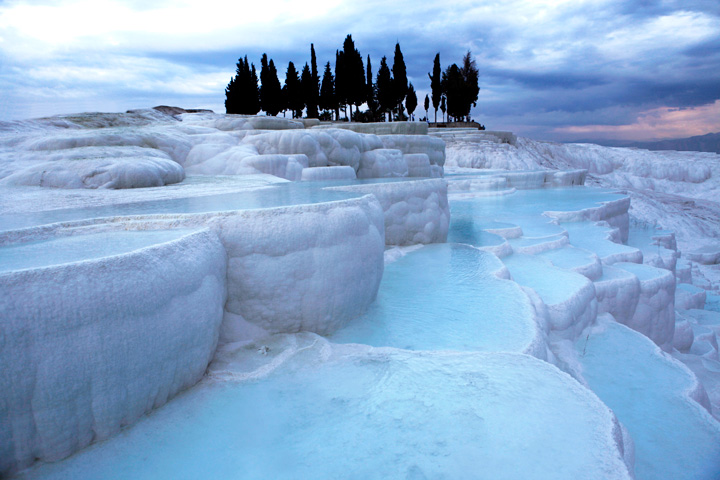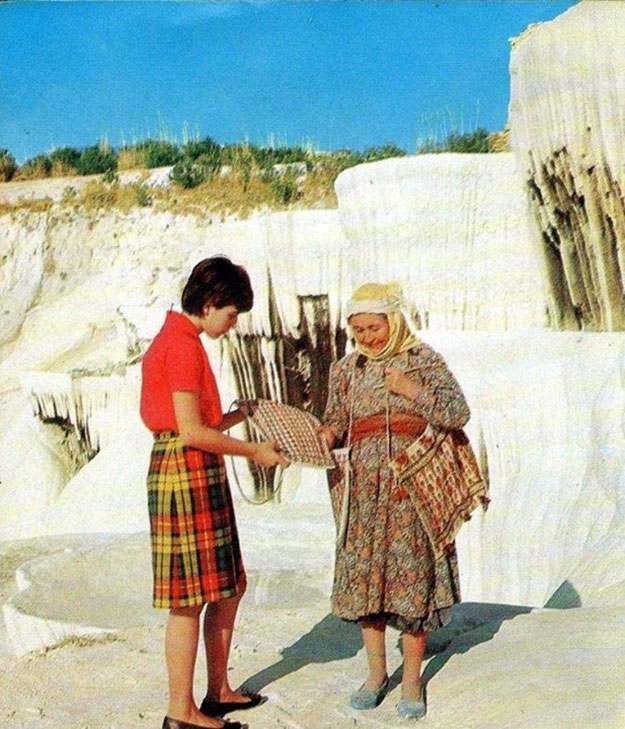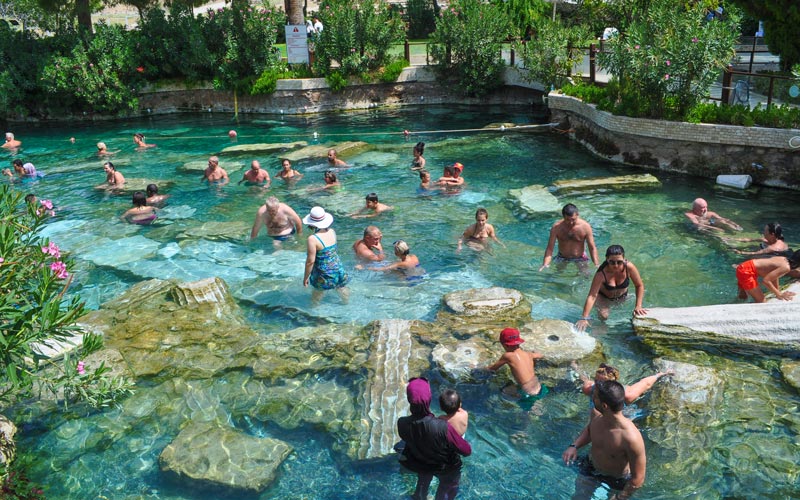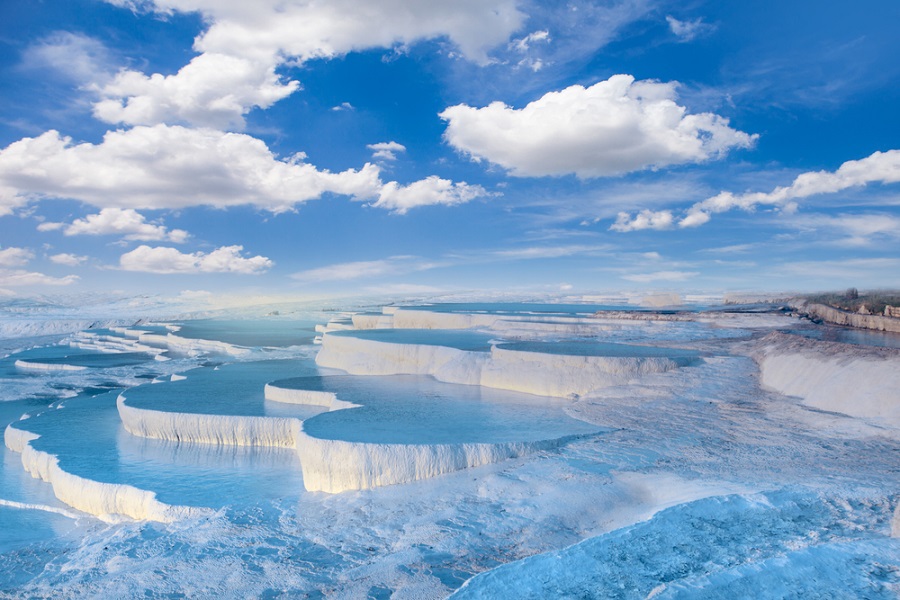Pamukkale is a wonder of nature which consist travetines located in beautiful city of Denizli
When the hot mineral water inside the rocks get cool down, Calsium Carbonate precipates and
gives the cotton candy look of travertines. Pamukkale is one of the most popular tourist
attraction in Turkey. There are thousands of natural and cultural heritage sites which are under
the protection of UNESCO but there are only 38 places which is natural and culturel heritage
at the same time and Pamukkale is one of them.
Every travertine shaped as terraces and filled with turqoise water. First settlements in this area
goes back to 2nd century BC and called Hierapolis which means holy city. This city built by
Pergammon king at the time. Travertines can be observed all over the World ( TrivolItaly,
Yellowstone/ USA) but none of them is a match for Pamukkale in a sense of the dimension
and unique snow white colour.
Pamukkale is covering the whole moutain which is about 2 km square and the city on top of
that mountain is covering 8 km square. you can find natural mineral water resourses all over
the mountain and this reasourses feed the pools of Pamukkale and pools inside the ancient city
of Hierapolis. One these pools called The pool of Cleopatra which people believe that this
pool is the source of the beauty of Cleopatra and has healing effect on some diseases. After
the earthquake in 7th century, the pillars which surrounds the pool and road around it
collapsed into the pool. This incident gives to the people visiting the chance to swim with
archeological ruins in that pools.

What Happened to Pamukkale and Why?
Despite the fact of travertines of Pamukkale originally white, after 1990s global and loc
environmental pollution started to effect Pamukkale’s snow white appereance. All the toxic
gasses from automobiles, industries, damage in the ozone layer of the atmosphere and due to
this increased level of UV rays, no regulations on the water flow from Pamukkale’s natural
water sources, increased tourist number and interection of ground with thepeople’s
bacterial/fungal infections, wearing shoes and slippers on travertines, hotel constructions
which are dangerously close to travertines, interrupting thermal minural water route which
creates travertine, to reach travertine and taking the water for their clients , wastes of hotels,
etc.
All these reasons were brought Pamukkale to the edge of destruction. Pamukkale started to
lose its snow white cotton candy appereance, UNESCO considered to take out Pamukkale
from the list of natural heritage list and number of visitors dramatically dereased due to loose
of color.

(you can see people with shoes)
Renewing Pamukkale
In order to stop the destruction of this natural wonder by human hand, Government stepped in
and formed a commision to take care of this situation. They decided to take down all the
hotels arround Pamukkale. During this period Pamukkale closed to the visitors. After a tough
2 years hard work paid off and UNESCO decided to keep Pamukkale on the heritage list in
the year of 1999.
After opening Pamukkale to the visitors, area was shut off the car traffic, parking places were
built in certain distance. Wearing shoes and slippers on the ground has been prohibited as
well. Cleaning of the hotel ruins was completed in 4-5 years after 2000 and danger for
Pamukkale was almost eliminated. Almost, since water was flowing a lot (400 litre per
second), desired presipitation could not be maintained. And further non-stop flow of the water
brings seeweed and green/yellow color with itself. In 2006 water supply to the area has been
planned by and computer so as water is given to the rocks in certain days and hours and rest
of the time they are left dry. (260 litre per second) Therefore the time for the presipitation is
provided.
These measures for the protection of Pamukkale are still on the table. So don’t forget to park
your car a bit far, bring a pocket for your shoes and then you will have the chance to enjoy
magnificent view from terrace with mineral warm water, to put mineral mud onto your face as
beauty mask, to receive health and beauty as once Cleopatra did!

Recently, Pamukkale hosts more than 2 million people per year. We don’t know how global
warming and air/water/soil pollution will effect this unique beauty and when. So the wisest
thing to do is giving a visit as soon as possible․

